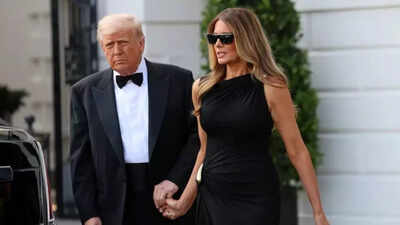
When Melania Trump received an EB-1 visa, often dubbed the “Einstein visa,” in 2001, it raised eyebrows and continues to stir debate. Reserved for individuals with “extraordinary ability” in fields such as science, arts, education, business, or athletics, the EB-1 green card is typically associated with Nobel laureates, Olympic medalists, or globally recognized experts.
Melania, a Slovenian model at the time, was not widely known for groundbreaking accomplishments, prompting questions about how she met the high bar required. So, what exactly is the Einstein visa, and how did the former First Lady qualify for a program meant for the world’s best and brightest?
What is the EB-1 or 'Einstein' visa?
The EB-1 visa is a US employment-based green card designed for individuals who can demonstrate extraordinary ability in specific fields, or who are recognized as outstanding professors, researchers, or multinational executives.
Applicants must prove “sustained national or international acclaim” and either win a major international award (like a Nobel Prize) or meet at least three of ten criteria set by US Citizenship and Immigration Services (USCIS).
These include published work, media recognition, contributions to a field of major significance, or commanding a high salary compared to others in the same field.While the standards are rigorous, the process is subjective.
Immigration officers ultimately decide if the evidence supports a claim of extraordinary ability. This subjectivity has sparked debate over how consistently the criteria are applied and who benefits most from its loopholes.
How did Melania Trump qualify for the Einstein visa?
Melania Trump, then known as Melania Knauss, was living in New York as a model when she applied for the EB-1 visa in 2000. It was approved the following year. Though she was featured in magazines and had some runway experience, she had not received prestigious modeling awards or reached the supermodel status typically associated with international acclaim.
Critics argue her qualifications were modest compared to the visa's intent.Democratic Congresswoman Jasmine Crockett recently reignited the controversy, questioning whether Melania’s case truly exemplifies merit-based immigration. Her approval has drawn comparisons to other questionable EB-1 recipients, including Playboy models and niche artists who managed to craft narratives aligning with the visa’s requirements.Experts note that while the visa is often seen as exclusive, it can be awarded to applicants whose accomplishments, though not widely known, are well-documented and strategically framed within a narrow field. In Melania’s case, her successful petition may have emphasized uniqueness in her modeling niche, media presence, or professional trajectory.
The larger debate: Loopholes, privilege, and policy
The EB-1 program, limited to around 40,000 visas annually, has been praised for attracting top global talent.
But its subjective evaluation process has also made it vulnerable to exploitation. Legal experts and immigration attorneys admit that certain applicants with the right legal guidance can tailor their portfolios to meet the criteria, even without widely celebrated achievements.Adding to the irony, Melania later used her citizenship to sponsor her parents for green cards through “chain migration,” a policy her husband, Donald Trump, has publicly opposed. This contradiction has further politicized her immigration journey and raised broader questions about fairness, privilege, and transparency in the US immigration system.

 13 hours ago
41
13 hours ago
41




























 English (US)
English (US)